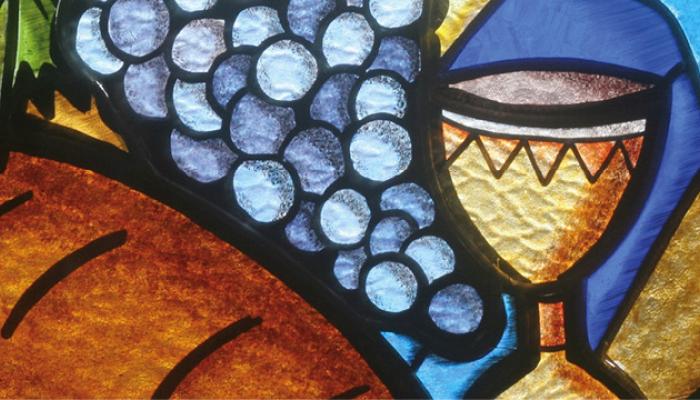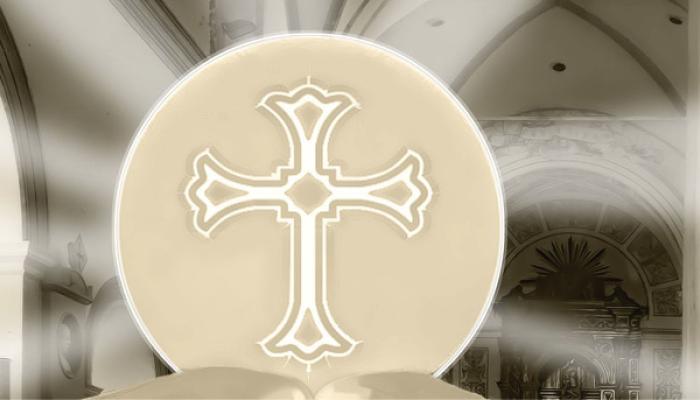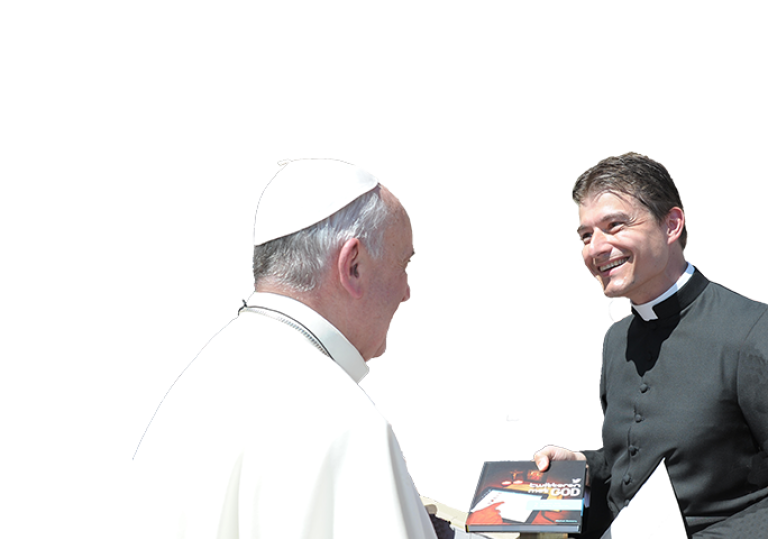
3.47 Kush i zgjedh leximet? A më lejohet të fle gjatë homelisë?
Kisha ka bërë një skemë për leximet, në mënyrë që ata që shkojnë në Kishë të dëgjojnë sa më shumë lexime nga Bibla që është e mundur gjatë vitit. Çdo ditë ose çdo ditë feste ka leximet e veta specifike.
Gjatë predikimit, prifti shpjegon dhe zbulon kuptimet e leximeve. Shpesh bëhet dhe lidhja me jetën tonë të përditshme. Pavarësisht se një predikim mund të të prekë më shumë se një tjetër, por ti mund të përfitosh gjithmonë diçka prej tij. Në fund të fundit, ka të bëjë me Jezusin i cili të fton ta ndjekësh dhe të jesh me të vërtetë i lumtur! Aplikacioni #TmZOTIN [>The app] ju ndihmon të ndiqni tekstet standarde të meshës në shumë gjuhë.
Si kremtohet Eukaristia ?
Kremtohet në dy momente të mëdha, që formojnë një veprim të vetëm kulti: liturgjia e Fjalës, që përfshin shpalljen dhe dëgjimin e Fjalës së Hyjit; liturgjia eukaristike, që përfshin paraqitjen e bukës dhe të verës, lutjen ose anaforën, që përmban fjalët e shugurimit, dhe kungimin. [KKKP 277]
What elements are essential to a Holy Mass?
Every Holy Mass (celebration of the Eucharist) unfolds in two main parts, the Liturgy of the word and the Liturgy of the Eucharist.
In the liturgy of the Word, we hear readings from the Old and New Testament and also the Gospel. Besides that there is an opportunity for preaching and general intercessory prayers. In the subsequent Liturgy of the Eucharist, bread and wine are offered, consecrated and distributed to the faithful at Communion. [Youcat 213]
How is the Mass structured?
Holy Mass begins with the gathering of the faithful and the entrance of the priest and the others who serve in the sanctuary (altar servers, lectors, cantors, and so on). After the greeting comes the Penitential Rite, which concludes with the Kyrie. On Sundays (outside of Advent and Lent) and feast days, the Gloria is then sung or recited. The prayer of the day introduces one or two readings from the Old and New Testament, followed by the responsorial psalm. Before the Gospel is read, there is an Alleluia, or acclamation. After the proclamation of the Gospel on Sundays and feast days, the priest or deacon gives a homily at least on Sundays and feast days. Then, again only on Sundays and feast days, the congregation professes its common faith in the Creed, followed by the intercessions. The second part of Holy Mass begins with the preparation of the gifts, which concludes with the Offertory prayer. The high point of the Eucharistic celebration is the Eucharistic Prayer, which is introduced by the Preface and the Sanctus. Now the gifts of bread and wine are transformed into the Body and Blood of Christ. The Eucharistic Prayer concludes, finally, in the doxology, which makes the transition to the Lord’s Prayer. Then comes the prayer for peace, the Agnus Dei, the breaking of the bread, and the distribution of the holy Gifts to the faithful, which often is done only under the form of the Body of Christ. Holy Mass ends with meditation, thanksgiving, a concluding prayer, and a blessing by the priest.
The Kyrie
Celebrant. Lord, have mercy!
Response. Lord, have mercy!
C. Christ, have mercy!
R. Christ, have mercy!
C. Lord, have mercy!
R. Lord, have mercy!
C. Kyrie eleison! R. Kyrie eleison!
C. Christe eleison! R. Christe eleison!
C. Kyrie eleison! R. Kyrie eleison!
The Gloria
Glory to God in the highest,
and on earth peace to people of good will.
We praise you, we bless you,
we adore you, we glorify you,
we give you thanks for your great glory,
Lord God, heavenly King,
O God, almighty Father.
Lord Jesus Christ, Only Begotten Son,
Lord God, Lamb of God, Son of the Father,
you take away the sins of the world,
have mercy on us;
you take away the sins of the world,
receive our prayer;
you are seated at the right hand of the Father,
have mercy on us.
For you alone are the Holy One,
you alone are the Lord,
you alone are the Most High,
Jesus Christ,
with the Holy Spirit,
in the glory of God the Father.
Gloria in excelsis Deo
et in terra pax hominibus bonae voluntatis.
Laudamus te, benedicimus te,
adoramus te, glorificamus te,
gratias agimus tibi propter magnam gloriam tuam,
Domine Deus, Rex caelestis,
Deus Pater omnipotens,
Domine Fili unigenite, Iesu Christe,
Domine Deus, Agnus Dei,
Filius Patris,
qui tollis peccata mundi, miserere nobis;
qui tollis peccata mundi,
suscipe deprecationem nostram.
Qui sedes ad dexteram Patris, miserere nobis.
Quoniam tu solus Sanctus,
tu solus Dominus,
tu solus Altissimus, Iesu Christe,
cum Sancto Spiritu:
in gloria Dei Patris. Amen.
The Sanctus
Holy, Holy, Holy Lord God of hosts.
Heaven and earth are full of your glory.
Hosanna in the highest.
Blessed is he who comes in the name of the Lord.
Hosanna in the highest.
Sanctus, Sanctus, Sanctus Dominus Deus Sabaoth.
Pleni sunt caeli et terra gloria tua.
Hosanna in excelsis.
Benedictus qui venit in nomine Domini.
Hosanna in excelsis.
The Agnus Dei
Lamb of God, you take away the sins of the world, have mercy on us.
Lamb of God, you take away the sins of the world, have mercy on us.
Lamb of God, you take away the sins of the world, grant us peace.
Agnus Dei, qui tollis peccata mundi, miserere nobis.
Agnus Dei, qui tollis peccata mundi, miserere nobis.
Agnus Dei, qui tollis peccata mundi, dona nobis pacem.
[Youcat 214]
Shpalleni Fjalën në çdo rast të përshtatshëm dhe të papërshtatshëm. Këshilloni, qortoni, por gjithmonë me mirësi; nxitni papushim në durim dhe mësimdhënie. Fjalët tuaja qofshin të thjeshta, që të gjithë të mund t’i kuptojnë, mos të jenë homeli të gjata. Lejomëni t'ju them: kujtoni babanë tuaj, kur ai ishte aq i lumtur që gjeti një famulli tjetër afër qytetit tuaj të lindjes, ku mesha u kremtua pa një homeli! Homelitë janë vërtet bartja e hirit të Zotit: të thjeshta, në mënyrë që të gjithë të mund t’i kuptojnë dhe të duan të përmirësohen . [Papa Françesku, Homelia, 9 nëntor 2015]





